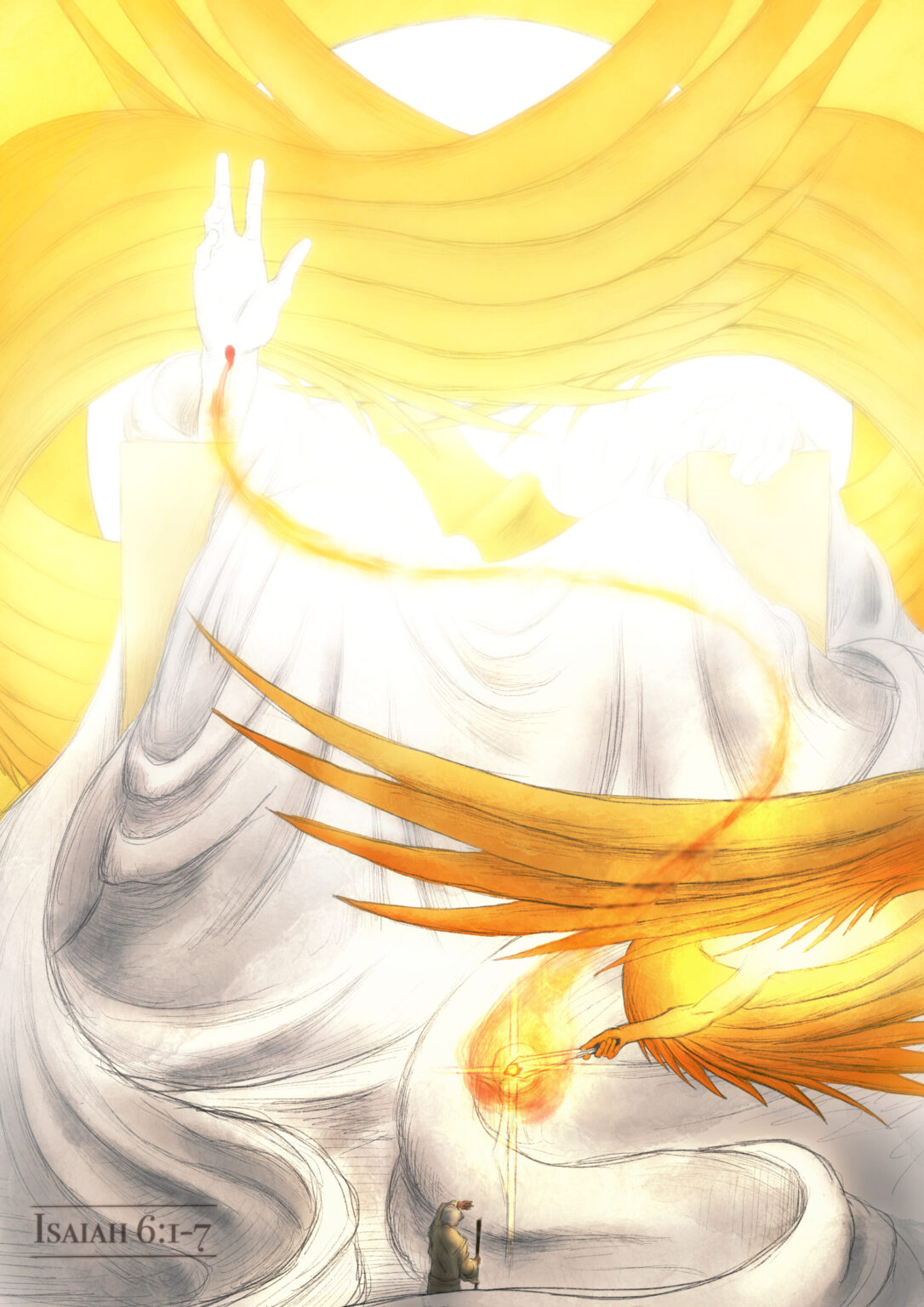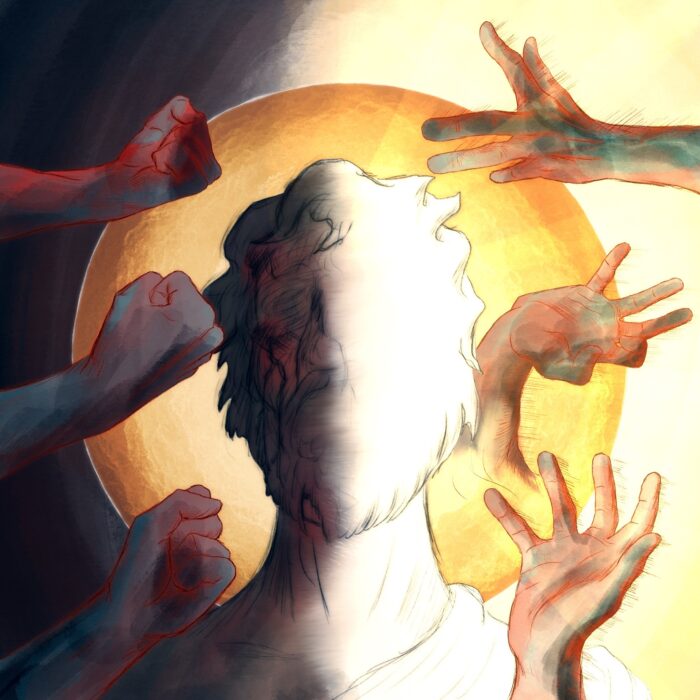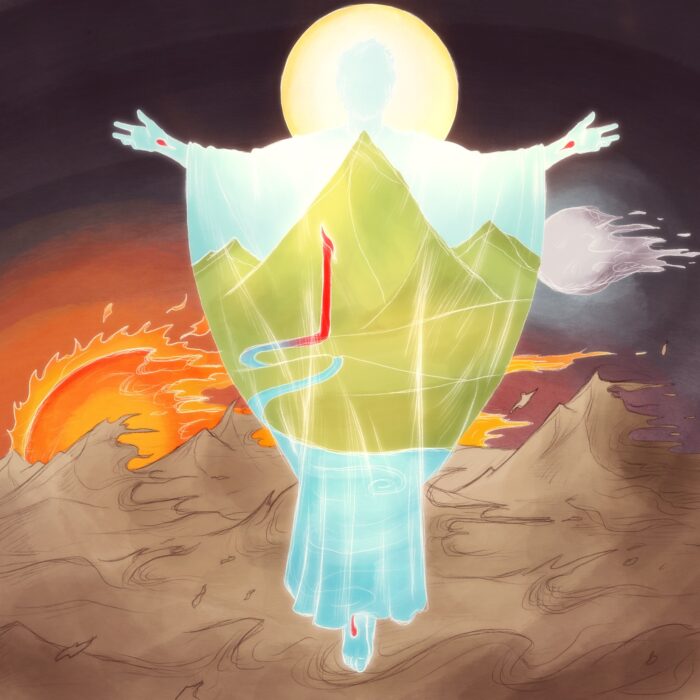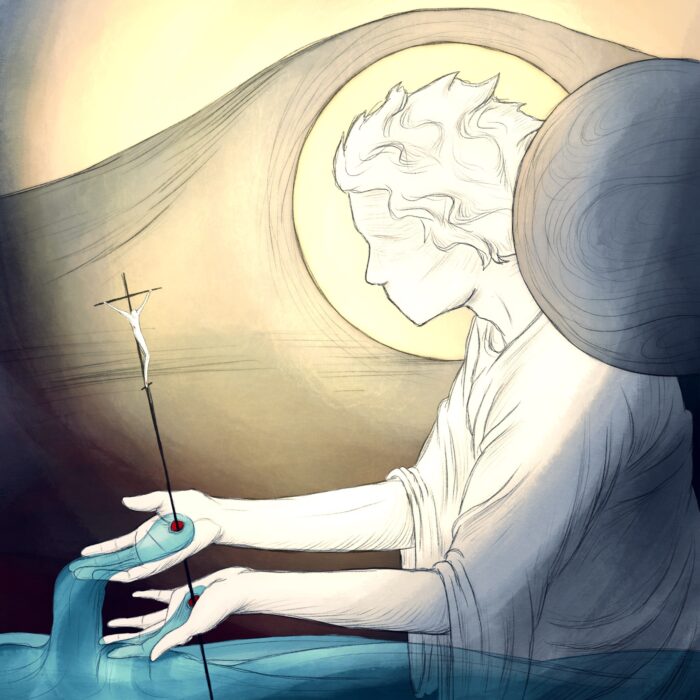
In the year that King Uzziah died I saw the Lord sitting upon a throne, high and lifted up; and the train of his robe filled the temple. Above him stood the seraphim. Each had six wings: with two he covered his face, and with two he covered his feet, and with two he flew. 3 And one called to another and said:
“Holy, holy, holy is the Lord of hosts;
the whole earth is full of his glory!”And the foundations of the thresholds shook at the voice of him who called, and the house was filled with smoke. And I said: “Woe is me! For I am lost; for I am a man of unclean lips, and I dwell in the midst of a people of unclean lips; for my eyes have seen the King, the Lord of hosts!”
Then one of the seraphim flew to me, having in his hand a burning coal that he had taken with tongs from the altar. And he touched my mouth and said: “Behold, this has touched your lips; your guilt is taken away, and your sin atoned for.
– Isaiah 6:1-7
Coming into this picture, I knew that I wanted to visually forge the link between the exalted YHWH of Isaiah 6 and the Suffering Servant of Isaiah 52-53 (who we are also told is “high and lifted up”, Isaiah 52:13). This is a crucial and beautiful connection to make, and it’s one that John teaches us to do in his gospel when he says that the figures of the exalted Lord and the suffering servant are one in the same: Jesus Christ (John 12:37-41). So, for John, YHWH of chapter 6 and the Sufferer of chapter 53 are the same person, the God-Man, Jesus Christ.
Now, with that in mind, I came to Isaiah 6 and wanted to see how I might use imagery to make that connection explicit. Well, the answer came in verse 6-7. Here we see one of the seraphim take a burning coal from the altar and use it to take away Isaiah’s guilt and atone for his sin. I think we are getting a foreshadowing of the Lord’s cross-work here. Ultimately, it will be YHWH Himself, in the Son, who will bear the fires of judgment (the coal) in His own body on the cross (the altar), and through this work will indeed take away the guilt and atone for the sins of His people – those who in all times who have trusted in Him. Isaiah was purified because of the cross work of God the Son, Jesus Christ, the one whom He saw “high and lifted up” on the throne, and I believe that cross work was being trans-temporally applied to him in this vision through the symbolism of the coal and altar.
So, in this picture, we see the Seraph holding the coal out toward Isaiah, but in the coal’s aura, you can see the cross and the crucified Christ, representing the fact that HE will be the one to ultimately bear the fires of judgment for the purification of His people. I tried to solidify this connection by showing the fires of the coal traveling up to the throne and into the wounds on the Lord’s hands. Ultimately, it will be the Holy, Holy, Holy LORD of Hosts – the one who humbles the seraphim with His beauty and terrifies Isaiah with His glory – who will take away the guilt of His people and atone for their sins, and He will do it by taking on flesh and blood and bearing their deserved punishment in His own body on the cross – there is truly NO GOD, like YHWH!




